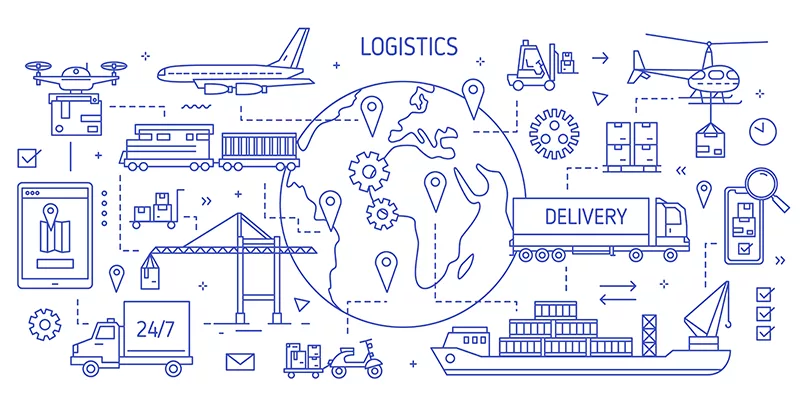Recently, a growing number of healthcare organisations are transitioning toward a circular supply chain model as sustainability has become a significant decisive factor for both businesses and their customers. Circular supply chain models may come in many different forms yet, they all share the same driving philosophy — reducing waste and minimising environmental impact. However, there are a handful of reasons why global healthcare organisations are making slow progress toward fully implementing a successful circular supply chain system.
COORDINATION WITH WASTE COLLECTION SYSTEMS
Waste collection systems are a crucial component of circular supply chain strategies and serve several essential purposes, but they simultaneously create a major problem when it comes to establishing a circular supply chain solution as they need to cover an expansive area. This is so that returned products can easily be collected from the end customer and delivered to the recycling, refurbishing, or repair facility — none more so than when goods are sold and purchased online. At the same time, it’s also challenging for companies to ensure that the waste collection methods are aggregating a commercially viable amount of goods and materials in a cost-effective manner.
Leading healthcare organisations today are facilitating a circular supply chain by directly addressing these delinquencies in existing waste collection systems. Businesses that are focused on servicing healthcare brands are uniquely leveraging seamless global returns solutions through enhanced carrier networks and intelligent technologies that collect products back from the end consumer — no matter where they are, and have their products or waste returned back to their warehouses, or forwarded to a manufacturing or recycling facility depending on their business needs after aggregating a sufficient, cost-effective amount.
Similarly, software that deploys application programming interface (API) integration empowers another layer of visibility to a circular supply chain not found elsewhere. Thanks to API, healthcare businesses can integrate their warehouse, recycling, and manufacturing facilities management system into this portal to create a more thorough and comprehensive detailed overview of how their returns are being utilised that sits alongside metrics from across the entirety of their supply chain operations. Healthcare businesses are then empowered to distil data from across all touchpoints of their supply chain to analyse trends and identify areas for optimisation thanks to the technology’s comprehensive reporting suite.

INCREASING TECHNOLOGY ACCESSIBILITY AND AVAILABILITY
An additional obstacle that prevents healthcare organisations from moving closer toward circularity is a lack of supporting tech infrastructure, especially in remote areas. Supporting tech infrastructure is critical to circularity’s success as it facilitates supply chain visibility and improves transportation via route optimisation.
Presently, delivery providers are unable to optimise their delivery routes in many rural areas due to the lack of real-time data availability meaning that businesses cannot reduce the time it takes to deliver or pick up returns thus impacting the amount of transportation-related CO2 emissions generated on the road.
The advanced circular supply chain solutions of today enable a certain level of route optimisation to the extent that healthcare businesses can strategically split their inventory based on the data from these systems to be stored in a location that’s closer to their end-consumer. Furthermore, in the near future, leading solution providers will seek to incorporate advanced routing algorithms into their technology that will automatically define where returned goods should be moved to, based on efficiency — the closest warehouse or processing facility, and product materials.
“Today’s powerful logistics technology acts as an integrated bridge between all components of the healthcare supply chain”
Joshua Tsui, CEO, Floship
SATISFYING REGULATORY REPORTING REQUIREMENTS
Today’s powerful logistics technology acts as an integrated bridge between all components of the healthcare supply chain. Data is consolidated across every touchpoint of the supply chain from the manufacturer to warehousing, last-mile delivery, and returns. Advanced visibility portals create a unified data experience thanks to a comprehensive reporting suite that empowers healthcare brands to quickly distil trends and make optimisations seamlessly by leveraging the technology’s intelligent automation rules engine.
Technology partners are helping to address emissions reporting deficiencies by creating a unified emissions reporting tool within their portals. These advanced features will enable healthcare businesses to track CO2 emissions across the transportation and warehousing stages of their supply chain.
Circular supply chains today remain rare, elusive, and difficult for healthcare businesses to implement for many of these reasons. However, by partnering with the right technology solution providers, healthcare organisations with both global and local reach can serve as leaders in their industries and communities and pave the way forward with greater efficiency and sustainability in mind to not only achieve business and financial goals, but environmental goals as well.






















